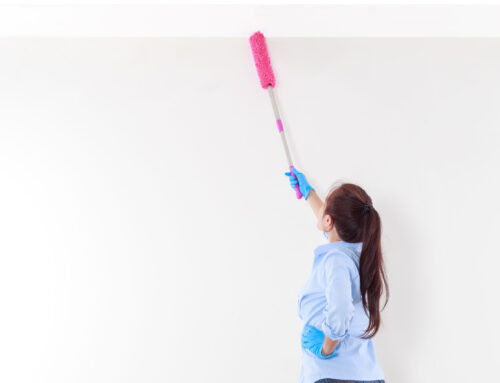Cleaning is an essential aspect of maintaining a healthy and comfortable living environment. As the seasons shift, so do the challenges that come with keeping our spaces clean and organized. Seasonal cleaning involves adapting your cleaning routine to the weather changes that each season brings. This not only ensures that your surroundings remain pristine but also helps you tackle specific issues unique to each time of the year. In this article, we’ll explore the concept of seasonal cleaning, its benefits, and how you can tailor your cleaning routines to weather changes effectively.
Benefits of Seasonal Cleaning
A clean living environment offers more than just visual appeal; it plays a pivotal role in promoting your overall well-being. Regular cleaning, especially when adapted to the changing seasons, provides a multitude of benefits that contribute to a healthier and more comfortable lifestyle. Here’s an in-depth look at the advantages of seasonal cleaning:
- Elimination of Allergens: Throughout the year, allergens like dust mites, pollen, and pet dander accumulate in our living spaces. Seasonal cleaning allows you to target these allergens and remove them from your surroundings, reducing the risk of allergies and respiratory issues.
- Dust Reduction: Dust is not only an irritant but also a carrier of harmful particles. Regular cleaning, particularly focused on dusting surfaces and vacuuming, minimizes the presence of dust, improving indoor air quality and respiratory health.
- Pathogen Prevention: Germs and pathogens can linger on surfaces and contribute to the spread of illnesses. By cleaning and disinfecting regularly, especially during flu and cold seasons, you create a safer environment for yourself and your family.
- Mental Clarity: A cluttered and disorganized living space can lead to mental clutter as well. Seasonal cleaning encourages decluttering and organization, providing a sense of order and promoting mental clarity and focus.
- Stress Reduction: Walking into a clean and tidy space has a positive impact on your mental well-being. A clutter-free environment reduces feelings of stress and anxiety, helping you feel more relaxed and at ease.
- Improved Productivity: A clean and organized living space can boost productivity. When your surroundings are free from distractions and clutter, you can focus more effectively on tasks at hand.
- Physical Health: Seasonal cleaning often involves more thorough tasks, such as moving furniture and cleaning hard-to-reach areas. Engaging in such activities provides physical exercise and contributes to your overall health.
- Enhanced Indoor Aesthetics: A well-maintained living space is naturally more appealing. Seasonal cleaning keeps your home looking its best, making it a more enjoyable place to live and welcome guests.
- Long-Term Maintenance: Regular cleaning prevents the buildup of dirt, grime, and stains that can damage surfaces over time. By addressing these issues seasonally, you extend the longevity of your belongings.
- Positive Habits: Embracing seasonal cleaning fosters positive habits that extend beyond cleaning. It encourages responsible habits like tidiness, organization, and mindfulness about your living environment.
- Optimized Indoor Air Quality: With each change of season, various particles and pollutants can find their way into your home. Seasonal cleaning, including tasks like replacing air filters, improves indoor air quality.
- Reduced Pest Presence: Cleaning disrupts the habitats of pests, making your home less appealing to insects and rodents. This preventive measure helps keep unwanted critters at bay.
- Preparation for Weather Changes: Each season comes with specific challenges. By aligning your cleaning routine with the weather, you prepare your home for the unique messes and conditions that arise.
- Time Efficiency: Regular cleaning prevents the buildup of grime that would otherwise require intensive cleaning sessions. Seasonal cleaning breaks down the tasks into manageable chunks, saving you time in the long run.
- Satisfaction and Pride: A clean living space brings a sense of accomplishment and pride. When you invest time and effort into maintaining your home, you create an environment you’re proud to live in.
Understanding Weather-Related Cleaning Challenges
Different seasons bring forth unique cleaning challenges. During the spring, you may need to tackle deep cleaning tasks and decluttering. Summer introduces concerns about dust and proper ventilation, while fall and winter require preparation for colder weather and the mess that it can bring indoors. Adapting your cleaning routine to these challenges ensures that your living space remains comfortable and inviting throughout the year.
Spring Cleaning: Embracing Renewal
Spring cleaning is a time-honored tradition that involves a thorough and comprehensive approach to cleaning. It’s a chance to refresh your living space after the long winter months. Create a checklist that includes tasks like washing windows, cleaning baseboards, and decluttering closets. Emphasize the importance of decluttering as it sets the tone for the rest of the year.
Summer Cleaning: Dealing with Dust and Heat
Summer brings its own set of cleaning challenges. Dust accumulates quickly, and the heat can exacerbate indoor odors. Focus on regular dusting, vacuuming, and using air purifiers. Ensure proper ventilation to keep indoor air fresh. If you have indoor plants, give them extra care during this season to maintain their health and vibrancy.
Fall Cleaning: Preparation for Coziness
Fall cleaning is about preparing your space for the upcoming colder months. Clean HVAC systems and chimneys to ensure efficient heating. Store summer items properly, such as patio furniture and gardening tools. Fall is also a great time to deep clean carpets and upholstery.
Winter Cleaning: Managing Cold-Weather Mess
Winter cleaning involves managing the mess brought in by cold and wet weather. Place doormats at entryways to minimize dirt and moisture. Regularly clean and vacuum these areas to prevent dirt buildup. Consider establishing a “shoes-off” policy to further reduce dirt indoors. Carpet cleaning is particularly important during this season.
Adapting Cleaning Supplies and Tools
Different seasons call for different cleaning products and tools. Opt for eco-friendly cleaners that are gentle on both your living space and the environment. Use microfiber cloths for dusting and cleaning surfaces. Consider investing in a quality vacuum cleaner with HEPA filtration to effectively remove allergens from the air.
Creating a Seasonal Cleaning Schedule
Maintaining a consistently clean living environment requires a proactive approach that accounts for the changing seasons. One of the most effective ways to achieve this is by establishing a structured seasonal cleaning schedule. By assigning specific cleaning tasks to different times of the year, you not only ensure that your living space remains inviting but also address the unique challenges brought about by varying weather conditions. Here’s a comprehensive guide to creating a seasonal cleaning schedule, along with an example to get you started:
Spring Cleaning (March – May): Spring is synonymous with renewal, making it an ideal time for deep cleaning and rejuvenation. Focus on tasks that involve decluttering, organizing, and thoroughly cleaning areas that may have been neglected during the colder months. Examples of spring cleaning tasks include:
- Cleaning windows and window treatments
- Dusting and wiping down surfaces
- Vacuuming and steam cleaning carpets
- Deep cleaning kitchen appliances and cabinets
- Sorting through closets and donating or storing unused items
- Scrubbing bathroom tiles and grout
- Washing bedding, curtains, and rugs
Summer Cleaning (June – August): With the warmer weather, focus shifts to controlling dust, maintaining outdoor spaces, and optimizing ventilation. Summer cleaning aims to keep your living space fresh and comfortable. Key tasks for summer cleaning include:
- Regular dusting of surfaces, fans, and light fixtures
- Cleaning and maintaining air conditioning units and filters
- Sweeping and mopping floors
- Cleaning outdoor furniture and cushions
- Decluttering outdoor spaces and storage areas
- Checking and cleaning gutters and downspouts
- Washing or vacuuming window screens
Fall Cleaning (September – November): Fall is all about preparation for the colder months ahead. It involves tasks that ensure your home is ready for increased indoor time and potential inclement weather. Focus on tasks like:
- Cleaning and inspecting heating systems and chimneys
- Storing outdoor furniture and equipment
- Cleaning and storing summer items like fans and air conditioners
- Deep cleaning rugs and carpets
- Cleaning out gutters and downspouts once more before winter
- Organizing the garage and preparing for winter storage
Winter Cleaning (December – February): Managing the mess brought in by cold and wet weather is the focus of winter cleaning. By maintaining clean entryways and managing indoor spaces efficiently, you can prevent the spread of dirt and moisture. Key tasks during winter cleaning include:
- Regularly cleaning entryways, including doormats and shoe storage areas
- Vacuuming and sweeping high-traffic areas
- Shoveling snow and maintaining walkways
- Cleaning and organizing indoor storage areas like closets and pantries
- Deep cleaning upholstery and curtains
- Washing and sanitizing frequently touched surfaces
Example Seasonal Cleaning Schedule:
- Spring (April): Deep clean kitchen appliances, wash windows, declutter closets.
- Summer (July): Dust ceiling fans, clean outdoor furniture, sweep outdoor spaces.
- Fall (October): Inspect and clean chimneys, store summer items, clean gutters.
- Winter (January): Clean entryways, deep clean carpets, sanitize frequently touched surfaces.
The Psychological Impact of Seasonal Cleaning
Seasonal cleaning not only has physical benefits but also psychological ones. A clean and organized space can positively impact your mental well-being. It promotes a sense of accomplishment, reduces stress, and enhances focus. As you adapt your cleaning routine to weather changes, you’ll likely experience the emotional rewards of a well-maintained environment.
Safety Considerations in Seasonal Cleaning
While cleaning is essential, safety should never be compromised. Be cautious when using cleaning chemicals, and always follow instructions. When cleaning outdoor spaces or high areas, ensure that you’re using stable ladders and taking necessary precautions. Additionally, store cleaning products out of reach of children and pets.
Incorporating Weather-Conscious Practices
Weather-conscious cleaning involves adjusting your cleaning routine based on weather forecasts. For example, if rain is predicted, focus on indoor tasks. On sunny days, take the opportunity to clean and air out cushions and other items that can benefit from sunlight. By aligning your cleaning efforts with the weather, you can optimize the results.
Efficient Cleaning Hacks for All Seasons
Maintaining a clean and organized living space doesn’t have to be an overwhelming task, especially when you incorporate efficient cleaning hacks into your routine. These time-saving strategies are valuable all year round, complementing your seasonal cleaning efforts and helping you keep your home in top shape. Here’s a list of cleaning hacks that will simplify your cleaning process:
- Create a Cleaning Supplies Basket: Keep a portable basket or caddy stocked with essential cleaning supplies. This ensures that you can quickly address spills, stains, or messes as soon as they occur, preventing them from becoming bigger issues.
- Implement the Two-Minute Rule: If a cleaning task takes two minutes or less to complete, do it immediately. Whether it’s wiping down a countertop or folding a blanket, tackling these small tasks right away prevents them from piling up.
- Utilize Microfiber Cloths: Invest in high-quality microfiber cloths for dusting and cleaning surfaces. These cloths are effective at trapping dirt and allergens without the need for excessive cleaning products.
- Squeegee Shower Walls: After each shower, use a squeegee to quickly wipe down the walls and glass surfaces. This prevents water spots and soap scum buildup, reducing the need for frequent deep cleaning.
- Vacuum Regularly: Regular vacuuming not only keeps your floors clean but also prevents dust and dirt from settling in. Focus on high-traffic areas and areas prone to gathering pet hair.
- Use Baking Soda as a Cleaner: Baking soda is a versatile cleaning agent. Use it to scrub sinks, stovetops, and even as a carpet deodorizer. It’s gentle yet effective.
- Lemons for Natural Freshness: Cut a lemon in half and use it to clean and deodorize cutting boards, countertops, and more. The natural citrus scent is refreshing.
- Dishwasher Deep Clean: Periodically, place dishwasher-safe items like glass measuring cups filled with vinegar on the top rack of your dishwasher. Run a cycle to remove buildup and odors.
- Freezer Odor Eliminator: Place an open box of baking soda in your freezer to absorb odors. Replace it every few months to maintain freshness.
- Lint Roll Lampshades: Use a lint roller to gently roll over lampshades and remove dust and pet hair. This is a quick way to keep your lighting fixtures clean.
- DIY Air Freshener: Create your own air freshener by mixing water, a splash of rubbing alcohol, and a few drops of your favorite essential oil in a spray bottle.
- Tackle One Room at a Time: Instead of feeling overwhelmed by cleaning your entire house at once, focus on one room or area each day. This approach makes cleaning more manageable.
- Invest in Storage Solutions: Clutter can make cleaning seem like an endless task. Invest in storage solutions like baskets, shelves, and bins to keep your belongings organized.
- Delegate Tasks: Involve family members in the cleaning process. Assign tasks based on everyone’s capabilities, and make cleaning a shared responsibility.
- Set a Timer: Challenge yourself to clean for a set amount of time, like 15 or 30 minutes. You’ll be surprised at how much you can accomplish when you’re focused and working against the clock.
Maintaining Consistency in Yearly Cleaning
Forming cleaning habits that align with the seasons can lead to a consistently clean living space year-round. Start small and gradually build a routine that works for you. Involve your family to share the responsibilities. Over time, cleaning will become a natural part of your lifestyle, and maintaining a clean and organized environment will feel effortless.
In Conclusion..
Adapting your cleaning routine to weather changes is a practical and effective way to maintain a clean and inviting living space. Each season presents its own challenges and opportunities, and by tailoring your cleaning efforts accordingly, you can optimize the results. Whether it’s embracing the renewal of spring, managing the heat of summer, preparing for fall, or tackling the mess of winter, weather-conscious cleaning enhances both your physical and mental well-being. So, as the seasons shift, remember to shift your cleaning routine as well – your home will thank you for it.





